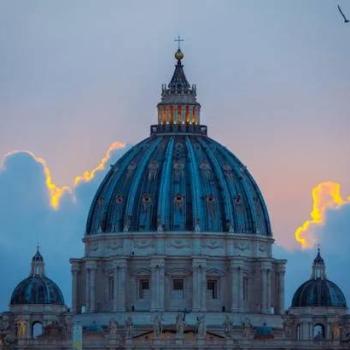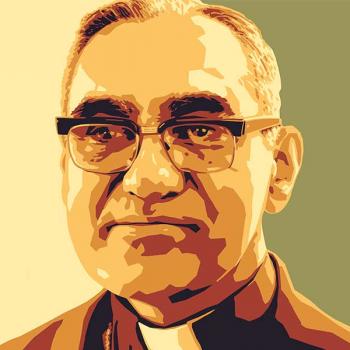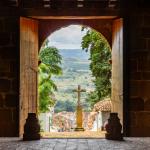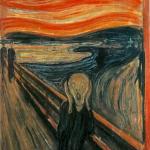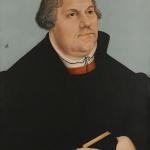Preliminary Politics
The news of the Council brought about mixed responses within the Church. Conservative circles tended to desire a strong reaffirmation of the centrality of the See of Rome, and a forceful condemnation of the rampant European liberalism. The more progressive camps were far less enthusiastic about the significance of the Council, and tended to react against the conservative actions. The chief element of Catholic conservatism was neo-ultramontanism, and its champion certainly stood in the person of Cardinal Manning.
Before leaving Rome during the summer of 1867, Manning met with Msgr. Ignatius von Senestréy of Ratisbon. Together, they swore an oath on June 28 at the grave of St. Peter to do all that was possible to ensure a definition of the doctrine of papal infallibility at the Council, for “Manning believed it was his mission to pursue the dogmatization of papal infallibility.”[1] Since he had been consulted by Pius in 1865 with regard to the opportuneness of the Council, Manning had already published his first pastoral letter, The Reunion of Christendom. His rhetoric closely mirrored that of William George Ward, the editor of the leading Catholic periodical in England, the Dublin Review, who advocated the absolute acceptance of papal infallibility as a requirement for genuine Catholic faith.[2] Manning was grouped into the “neo-Ultramontanist” camp, a more stringent variant of the Ultramontanism inspired by the writings of St. Robert Bellarmine. But Manning pressed his papal devotion to the extreme; he openly maintained that both Quanta cura and the Syllabus were examples of infallible teaching.[3]
Manning immediately began to exert his influence on the Council as powerfully as he could by maintaining contacts with consulters on the subsidiary committees. In particular, Manning attempted to sway the thoughts of Dr. Franz Moufang, meeting ten times with the regent of priests at Mainz and consulter in Rome. He told Moufang of his plan to organize a “corpe des Zuaves” of twelve consulters from France, Italy, Germany and England in order to forward the infallibility cause. Manning supplied him with literature on papal infallibility and referred him to a recently published article entitled De infallibilitatis extensione written by Ward. The plan backfired, as Moufang drafted a twelve-point statement as to why the doctrine should not be defined. This statement became the basis for the Minority bishops’ arguments at the Council. Moufang also advised his bishop, Msgr. Wilhelm von Ketteler, that Manning was conniving in Rome to manipulate the Council.[4] After the word got out about Manning’s antics, many bishops deliberately sought to avoid any contact with the fiery Archbishop.
The real fireworks began after February 18, 1869 when the Jesuit periodical Civiltà Cattolica published a “report” from the papal nuncio to France which was submitted to the Secretary of State, Cardinal Antonelli.[5] The Civiltà had gained notoriety as the “semi-official” news source of the Vatican, and its editor, Fr. Piccirillo, was Pope Pius’ personal confessor. Piccirillo concocted a scheme to publish a series of articles during the council on the different attitudes of Catholics in various countries. He sought information first from Antonelli, and was given a number of documents from France including the report of the nuncio. The Civiltà published the report without comment, a watershed moment in the history of the Council, and the Ultramontane editor of the French Univers, Louis Veuillot, republished it in February. It was by this publication that the subject of papal infallibility was thrust into the spotlight from the corners of private discussion.[6]
The report purported to convey the general sentiments of French Catholics toward the approaching Council. It asserted that the French foresaw that the Vatican Council would be conducted as expediently as the Council of Chalcedon in 451 A.D. (about one month), that they desired the Syllabus to be solemnly defined as well as the doctrine of the Assumption of the Blessed Virgin Mary, and finally, that they wished the doctrine of papal infallibility to be defined by acclamation at the Council. The report was grossly unsubstantiated, for the French Catholics were in fact quite divided, especially concerning the issue of papal infallibility. Antonelli himself was quite indignant over the matter, and even Pius spoke to Piccirillo of his own displeasure in the lack of prudence displayed.[7] While it was later asserted that the report was published simply to “test the waters”, the damage had been done, and from February until December, parties of bishops began to take form concerning the question of infallibility, and a media war sharply ensued.
The most extreme response to the report in Civiltà came in a series of articles from May 10 to 15 in the Augsburg Allgemeine Zeitung, which were latter combined with additional materials and published in book form under the widely distributed title Der Papst und der Council by “Janus”, though it was later determined that its author was Döllinger. The work accepted the divine institution of the papacy, but slammed the papacy of the Middle Ages as it had developed into a temporal power under the inspiration of Gregory VII and Innocent III. A substantial section of the book greatly criticized the Syllabus, the new and old forms of Ultramontanism and their position on papal infallibility, and the Jesuits in Rome.[8] A quick answer to Janus was written by Dr. Hergenröther in May, a premier Church historian, entitled Anti-Janus, but to little effect; the panic had set in among the German Catholics. During the same month, Franz August Beck, a judge at Baden, issued an alarming piece calling all German Catholics to reject Roman absolutism and band together to form an independent German national church.[9] The Munich theological faculty, no doubt animated by the spirit of Janus, published a memo in September warning of the possible consequences of the doctrine of papal infallibility, namely papal dominion over the secular sphere.[10] Döllinger, despite not being selected to serve on the subsidiary committees in Rome, was determined nonetheless to hold sway over the Council’s outcome and prevent the papacy from falling prey to Pius’ Ultramontanist minions.
Döllinger maintained close contact with two important French prelates in the hope of persuading them to form a French-German alliance against the definition of papal infallibility. Msgr. Henri Maret, Bishop in partibus of Sura, met with Döllinger in 1868 as he was composing his controversial work Du Concile génerale et de la paix religieuse, which oozed anti-infallibilism. Döllinger persuaded him to have a German translation made before its official publication in September 1869. But Maret would only be useful for a pre-conciliar literary campaign; it would require a seasoned diplomat who held sway over much of the episcopate. Döllinger was convinced that Dupanloup possessed the ability to unite an anti-infallibilist party and stonewall any attempt by the ultramontane policy at the Council: “From Munich Döllinger would supply information and ideas, while in Rome Dupanloup would provide the indispensable political leadership on the scene once the Council was convened.”[11] The two began a steady correspondence in December 1868, and met together in Mainz on September 5, 1869 where Dupanloup reported that nearly 50 French bishops were prepared to join “hand in hand with the Germans” against the definition.[12]
However, Dupanloup’s optimism was dampened by an ongoing ideological conflict with Veuillot. Veuillot’s belligerence toward liberal Catholics had created a deep rift within the French Church, and well known was his affinity for Manning. He published the Post scriptum of the Archbishop’s second pastoral letter of October 3, The Oecumenical Council and the Infallibility of the Roman Pontiff. The 150-page letter originally was very critical of anti-infallibilism, but was toned down by Ullathorne prior to its publication. However, Manning added the Post scriptum, which slammed Maret and his work. In response, Dupanloup penned his most sensational work entitled Observations sur la controverse souleé relativement à la definition de l’infallibilité au prochain councile, which declared the inopportuneness of the definition and the possible obstacles it would pose to Orthodox and Protestant Christians.[13]
Manning, Veuillot and Ward extended their influence to the United States through a New York contact, James E. MacMaster, who propagated their works in his publication, the Freeman’s Journal.[14] Manning’s plunge into pre-council polemics did not cease with the pastoral letter, but reached its ascendancy in November when he convinced Veuillot to publish the letter in its entirety. His insistence on its appearance in Univers before the Council guaranteed a poor translation, which led to great misunderstanding among the French. Dupanloup replied with a “scathing Advertisement” portraying Veuillot as a villain of Catholic peace.
On the eve of the Council, there was naturally great interest on the part of the bishops engaged in the infallibility battle. Ironically, the anti-infallibilist party most likely entered the proceedings with the most optimism. In May 1869, Victor-Auguste Dechamps, the Archbishop of Malines, had published a moderate pastoral letter entitled L’Infallibilité et le Concile Général which received great praise from Pius. It admitted that papal infallibility was a definable doctrine, but it was not prudent to rashly anticipate its definition. Bishop J. G. Strossmayer of Bosnia and Sirmium, after arriving in Rome for Council, wrote home to his intimate friend Dr. Francis Racki: “In the meantime it looks to me that the so called ‘Infallibilists’ should not have much hope that their labor and intentions will bear fruit. We shall see!”[15]
What is fairly certain is that Pius himself was not actively promoting the definition prior to December 8, despite the fact that certain Jesuits and Curia members were vociferously advocating it.[16] Odo Russell, caught up in the fervor of the infallibility debates, asked Antonelli whether the subsidiary committees or the pope were forging the way for papal infallibility. Russell describes the encounter: “Cardinal Antonelli replied that I was correct in thinking that the definition of the dogma had not been suggested by the Pope or his Governement, but that the bishops could not be prevented from taking it into consideration if so inspired during their debates.”[17] After all, Pius himself remarked wryly in light of the enormous sums of money he was losing while housing foreign bishops, “I don’t know whether the Pope will emerge from this Council infallible or fallible; but he will certainly be bankrupt!”[18]
——
[1] Matthias Buschkühl, Great Britain and the Holy See 1746-1870 (Dublin: Irish Academic Press, 1982), 129.
[2] Page, 18-19.
[3] J. Derek Holmes, “Newman’s Attitude to Ultramontanism and Liberal Catholicism on the Eve of the First Vatican Council,” Bishops and Writers: Aspects of the Evolution of Modern English Catholicism (Wheathampstead/Hertfordshire: Anthony Clarke, 1977), 29.
[4] Buschkühl, 130-131.
[5] The full French text of the report can be found in Roger Aubert, Vatican I (Histoire des Conciles Œcuméniques; Paris: Éditions de l’Orante, 1964) 261-269.
[6] Page, 54.
[7] On numerous occasions, Pius had to restrain the Civiltà on numerous occasion because of the controversy they stirred over papal infallibility. Cf. Buschkühl, 132.
[8] Thomas R. Ryan, “Environment of Hostility to Vatican Council I,” The Homiletic and Pastoral Review 62 (1962): 949-959.
[9] Büschkuhl, 142-143.
[10] Ibid., 142
[11] Alan Mitchell, “Partners in Failure: Dupanloup, Doellinger, and the Doctrine of Papal Infallibility,” Francia 10 (1983), 385.
[12] Ibid., 386.
[13] Christophe, 32-33.
[14] Büschkuhl, 145.
[15] Letter of November 23, 1869 to F. Racki, quoted in Ivo Sivrić, Bishop J. G. Strossmayer: New Light on Vatican I (Chicago: Franciscan Herald Press, 1975), 177.
[16] Büschkuhl, 133. Cf. Hughes, 342.
[17] Letter of December 8, 1869 to the Earl of Clarendon, quoted in Blakiston, 369.
[18] Quoted in E. E. Y. Hales, “The First Vatican Council,” Councils and Assemblies: Papers at the Eighth Summer Meeting and the Ninth Winter Meeting of the Ecclesiastical History of Society, 329-344 (Cambridge: University Press, 1971), 338.






